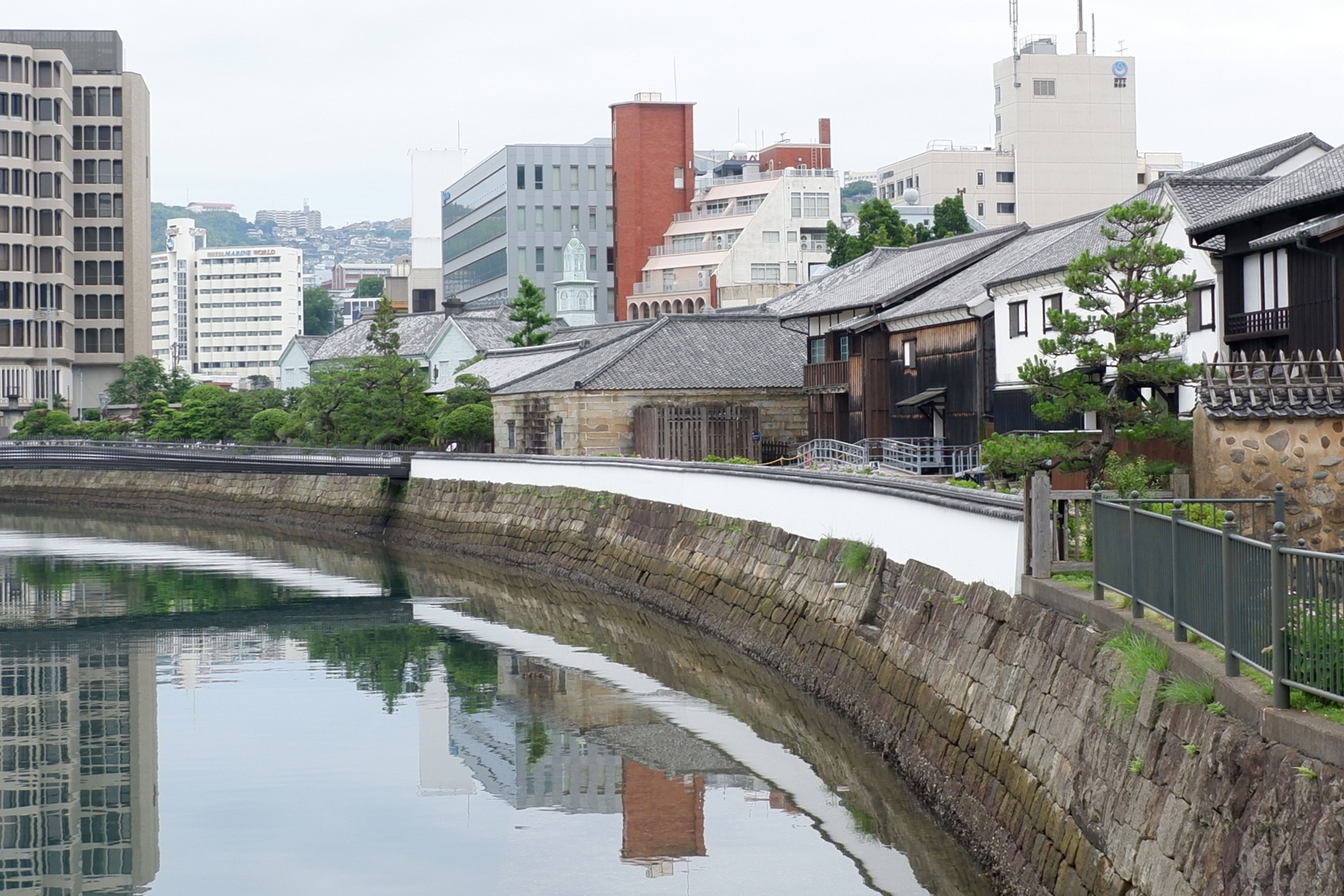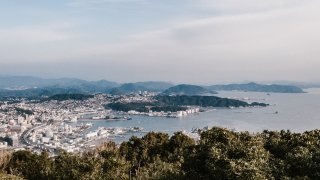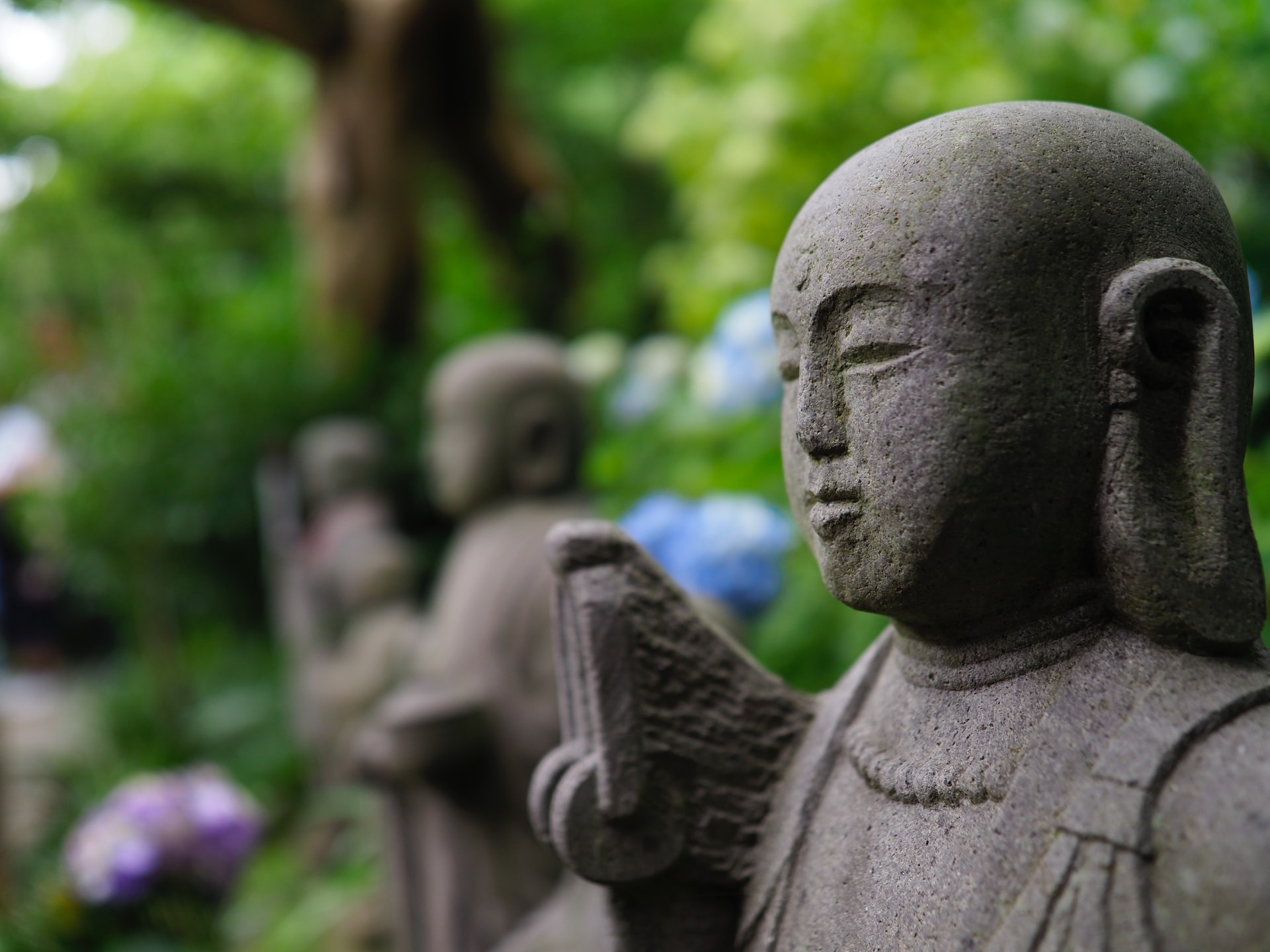The island of Kyushu is a destination that offers many different experiences with cultural, natural and historical highlights on offer. One of the cities located in the western part of Kyushu is Nagasaki, the internationally well-known, historical city of Japan. Nagasaki was one of the two cities that were hit by atomic bombs during the WWII. Usually the Atomic Bomb Museum and the historic Oura Church will be on the itinerary, but have you considered diving even deeper into Nagasaki’s multi-faceted history? The man-made island Dejima (出島) is the city’s most obvious link to Nagasaki’s past as Japan’s only foreign trade harbor city, at the time Japan was closed off from international trade and relations and nearly all foreign nationals were barred from entering Japan. Let’s learn more about its intriguing history and what you can still see at Dejima today!
The beginning of Dejima
The end of the 16th century was a turbulent time for Japan. This period is called the ‘Period of the Warring States’ as powerful families fought each other all over Japan. While multiple clans vied for dominance in Japan, in the end there was one clan who managed to finally unify Japan and end the fighting. This was the Tokugawa clan, and they started a shogunate that kept strict control over Japan for the next nearly three centuries.
This period is known as the Edo Period, and it was a time of peace and prosperity for Japan. It was not only the economy that bloomed, but arts and culture also had the chance to flourish. The country’s capital city moved to Edo (which is today’s Tokyo), and the Tokugawa’s wanted to make sure they would not lose power. One important way to do this was to keep as much foreign influence out as possible. It was time to concentrate on internal affairs only, and not be distracted by things like international politics, too exotic new ideas, and different religions that could pose a threat to the shogunate.
So Japan closed itself off from the rest of the world under a policy called sakoku, meaning ‘separating the country’. But did that mean that there was zero contact with the outside world? The answer is no, a few exceptions were made by the Tokugawa shogunate that made it possible for a select few foreigners to still trade and interact with Japan. A small artificial island called Dejima (also called Deshima) in the port of Nagasaki played a central role in these exceptions. Let’s learn more about Dejima, and what you can still see there today!

Portuguese and Dutch traders
The first foreigners to be sent to Dejima were the Portuguese, who were also the very first Europeans to come to Japan in 1543. They were quick to introduce guns and the Catholic religion to Japan, and after a Christian uprising in Shimabara, third shogun Ieyasu Tokugawa decided to kick out the Portuguese. This was only a few years after they were ordered to live in Dejima. Dejima was built in 1636 in port of Nagasaki in an attempt to separate the Portuguese from the Japanese. The name of the artificial island literally means ‘exit island’.
That left an empty spot on Dejima, and the economy of Nagasaki suffered as a result. Dutch traders were already in Japan at that time, and after the issues with the Portuguese the shogunate decided to exclusively trade with the Dutch and the Chinese from then on. Nagasaki became the designated port for foreign trade, and the Dutch were ordered to live on Dejima. Because the Dutch were not that keen on spreading their religion and their main goal was to trade and make money, the shogunate allowed them to stay as the only Westerners. In other words, the fan-shaped island of Dejima became Japan’s only gateway to the outside world during the Sakoku period.
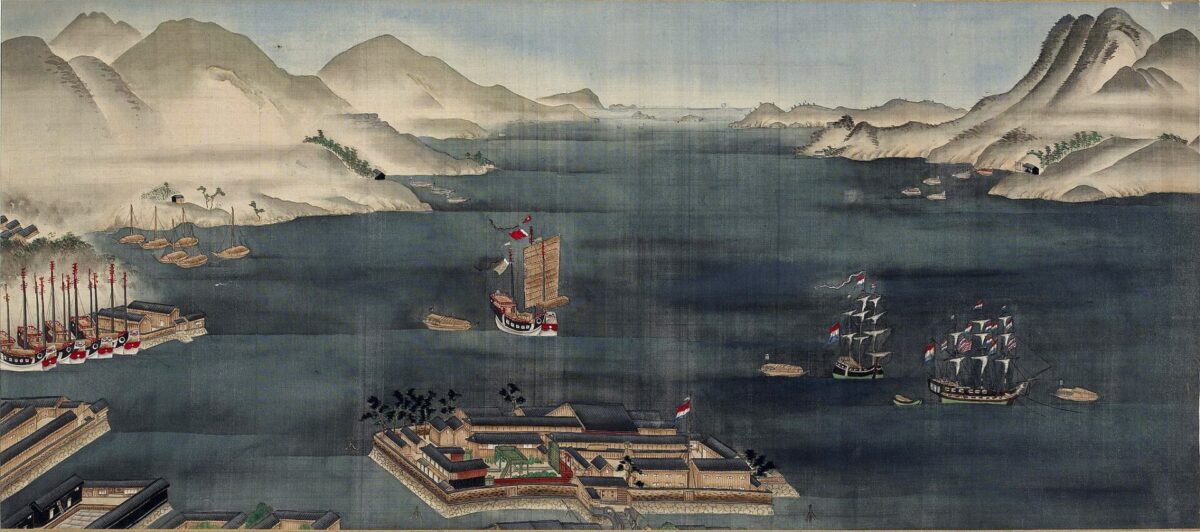
A port to another world
The rules for the Dutch people living in Dejima were very strict. They were not allowed to get off the island without permission, and the only bridge was heavily guarded. The Dutch were not allowed to bring any weapons or religious items, and they could not hold their own religious services anywhere in Japan. But they happily rolled with it, as the profits they made from the trade in silk, cotton, sugar, books, foreign technology, and overseas medicines were large.
The import of scientific foreign books especially proved to be very beneficial for the Japanese, as the Western world was moving very fast in terms of technological development at that time. Japan itself was not participating in the industrial movement of that time as the shogunate preferred things to stay as they were in order to keep the peace. There was even a Rangaku movement, the study of Dutch language and technologies.
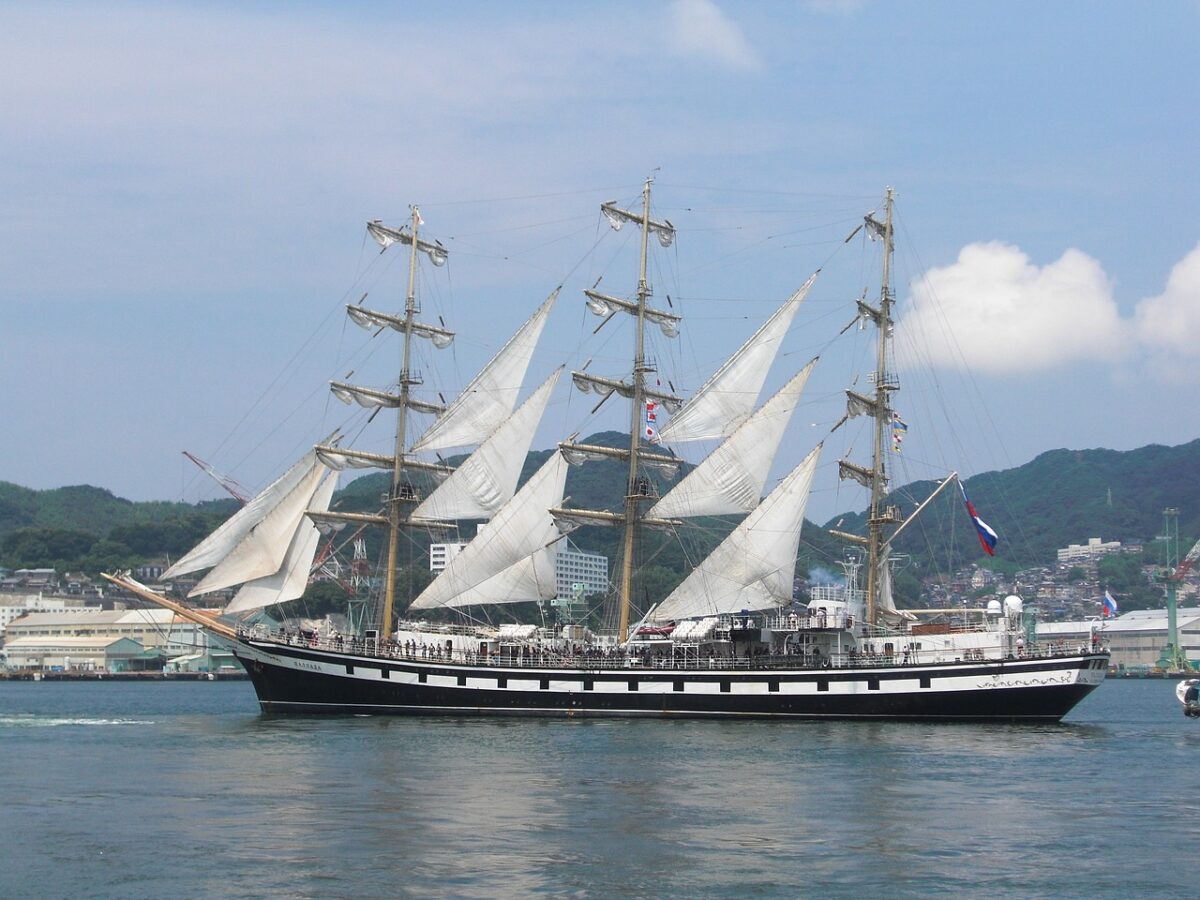
Cultural exchange in Dejima
But just like the samurai heads of every district had to travel to Edo to pay respect to the shogun regularly, so did the Dutch from 1660. They brought interesting artifacts with them as gifts. In exchange, they could hang around Edo (escorted, of course) for a bit to learn more about the town. The rules became slightly less strict towards the end of the Sakoku period, and at some point modern Dutch doctors were summoned to help cure sick important and rich people in Japan. Some examples of what else the Dutch introduced to Japan are photography, new sports like badminton, beer and coffee, cabbage and chocolate, and the piano.
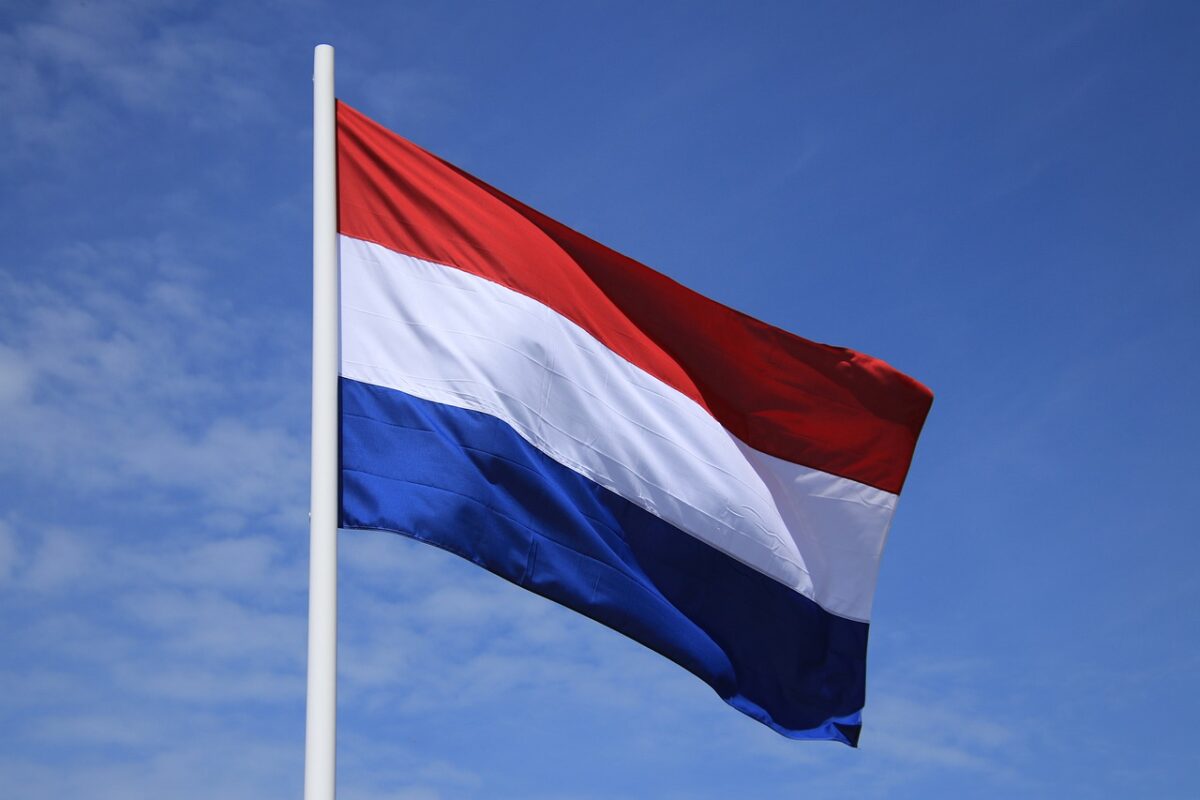
What can you see in Dejima now
The activities of the Dutch in Dejima ended in 1858, when the Americans opened up Japan to the rest of the world again. Nowadays, Dejima became attached to Nagasaki again after more land reclamation efforts. Today, the small island, which is now directly connected to land, stands out for its historic buildings.They started restoring Dejima’s buildings in 1953, and while many have been completed it is still a work in progress. Eventually, they even want to make Dejima an island again by digging canals around all its four sides.
You can access some of the beautiful old residences of the Dutch, which have characteristic interiors that look like a cross-over between Dutch and Japanese design. There are reconstructed warehouses as well, and in the Dejima Protestant Seminary you can see an exhibition about the trading period. Because of the size of Dejima you can easily discover the artificial island in about 2 hrs.

The streetscape has also been faithfully reconstructed with the paved streets, walls, and building exteriors transporting you straight back to life as it was in the late 19th century. Furthermore, you can see small models of Dejima as it was. And if you literally want to get a taste of how things were, restaurants serve some typical youshoku (Japanese-style Western) cuisine here, including beef curry and a Portuguese lunch. One of the must tries is the toruko rice (Turkish rice), consisting of pilaf rice, tonkatsu and spaghetti.
You can also visit several annual events and Dutch festivals like the Oranje Festival in late April.
Dejima is open from 8am to 9pm and the admission fee is ¥520.
How to get to Dejima
The easiest way to get to Dejima is to take a tram from Nagasaki Station. Board a tram bound for Shokakuji-Shita and get off at:
- Ohato (2nd stop, 3-minute walk) for Main Gate (Central Gate)
- Dejima (3rd stop, 1-minute walk) for West Gate (Sea Gate)
- Tsuki-machi (4th stop, 2-minute walk) for East Gate (Meiji Gate)
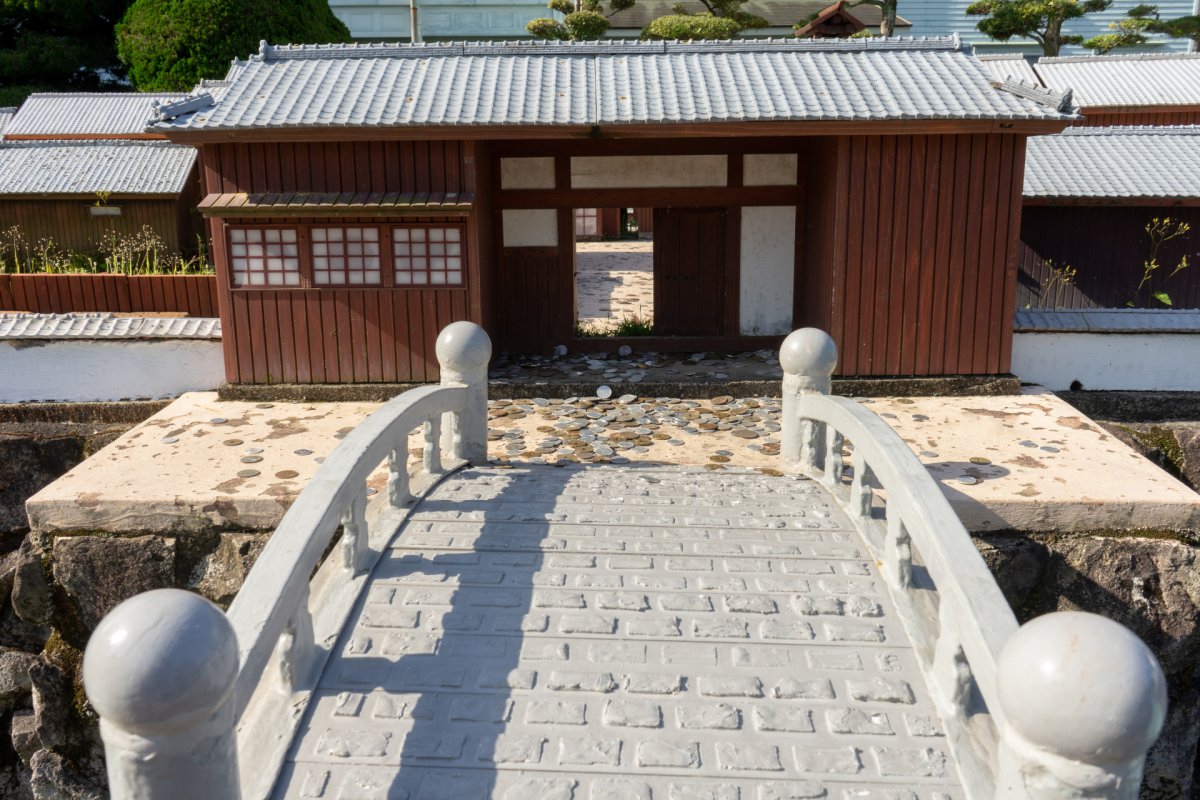
Where to stay in Nagasaki
- Hotel Belleview Nagasaki Dejima – Centrally located near the seaside economy hotel
- Nagasaki Bus Terminal Hotel – A conveniently located hotel within walking distance from Dejima
- Almas Guest House(アルマス – A small guesthouse with views of Dejima
If you are planning a trip to Nagasaki, make sure not to miss out on this important part of Japan’s history by visiting Dejima! The tiny tourist attraction played in important role in Japan’s history and international trade and relations. The artificial island is like travelling back in time and you can visit some beautiful old houses and other buildings. When you want to make sure that you don’t miss anything and hear all the interesting stories about the city, we recommend you to book a 1-day private tour with one of our expert guides. That way, you will definitely make the most out of your stay in Nagasaki!
Follow us on Instagram, Facebook and Twitter for more travel inspiration. Or tag us to get featured!
Happy travelling!
Other article you might enjoy

Stefanie Akkerman moved from the Netherlands to Japan in 2013 with her Japanese husband and son. She jumped into the niche of Dutch tour guiding in Tokyo and Kamakura in 2015 and occasionally writes articles about all the great sights and activities Japan has to offer. She loves (Japanese) food, and to work that all off she goes diving, snorkeling, cycling, or hiking.
This post may contain some affiliate links. When you click through and make a purchase we may receive some commission, at no extra costs to you.
